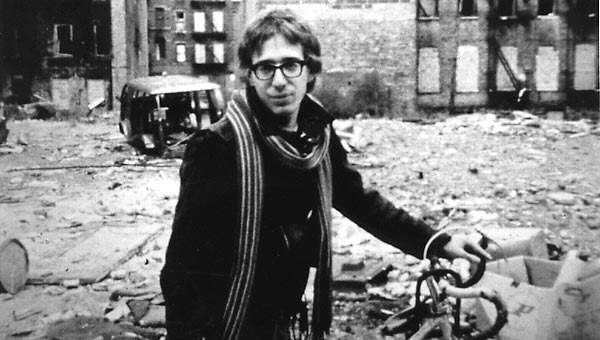 John Zorn’s TREATMENT FOR A FILM IN 15 SCENES, conceived of as “visual music,” was begun in 1981. Thirty years later, it reached audiences as individual shorts by four different filmmakers: 15 scenes: 254 shots (Gobolux), Well Then There Now, (Lewis Klahr), Bare Room, (Joey Izzo), and Arcana (Henry Hills). Zorn, NYC-born avantgarde composer and musician, sees film and music as irretrievably intertwined disciplines and has composed numerous cinematically influenced works, such as “Godard” and “Spillane.”
John Zorn’s TREATMENT FOR A FILM IN 15 SCENES, conceived of as “visual music,” was begun in 1981. Thirty years later, it reached audiences as individual shorts by four different filmmakers: 15 scenes: 254 shots (Gobolux), Well Then There Now, (Lewis Klahr), Bare Room, (Joey Izzo), and Arcana (Henry Hills). Zorn, NYC-born avantgarde composer and musician, sees film and music as irretrievably intertwined disciplines and has composed numerous cinematically influenced works, such as “Godard” and “Spillane.”
TREATMENT begins “Bare room, woman tied up on a bed.” Arcana consecutively lists the 254 shots in the 15 scenes by way of introduction, while the other films choose merely to introduce segments numerically. Textual notes stick with the viewer: “Gloves being put on.” “Telephone.” Classic black & white shifts to nostalgic color, filtered, porous, and soft. As images flicker by, we’re allowed little that feels consecutive, although recurring motifs ground the imagination with a sense of near-narrative. A sequence where the camera follows a woman crossing a crowded beach is at first idyllic and gradually turns claustrophobic and creepy as the viewer crowds her, an animation of knives shivers under translucent fabric. In Bare Room, a mushroom blooms, and then we see shadowy footage of Prague Castle and the Astronomical Clock.
… we see an apple disappearing, consumed by an invisible presence …
Lewis Klahr’s Well Then There’s Now is an animated textile collage: a live spider in a shot from Aracana here is a jeweled brooch, cut-outs and illustrations replace human limbs and faces. Well Then There’s Now contains more spoken word than the other films, and less musical instrumentation. “Suddenly one senses the presence of music, floating about like smoke,” a voice intones. In Arcana, an apple is eaten by a woman, but in Well Then and in Gobolux’s 15 Scenes: 254 Shots we see an apple disappearing, consumed by an invisible presence. Waltzing puppets in one film are shadowed by a bobbing skeleton marionette in the next.
Without having read the list of shots for TREATMENT, association becomes a ritualistic game of apophenia…
TREATMENT FOR A FILM offered the filmmakers a deliberate and highly specific visual score, and the resulting creations are unique cinematic events occurring along narrative parallels. Sometimes this results in such diversity the shots cannot be recognized without the treatment in hand; in other instances the results are disorientingly generic (similar images of a frying egg echo across all four films). Without having read the list of shots for TREATMENT, association becomes a ritualistic game of apophenia, flickers of recognition jogging memory and imagination from one film to the next. A psychic, sensory web, TREATMENT FOR A FILM IN 15 SCENES blurs the business of hearing and seeing to induce synesthesia in the viewer.

